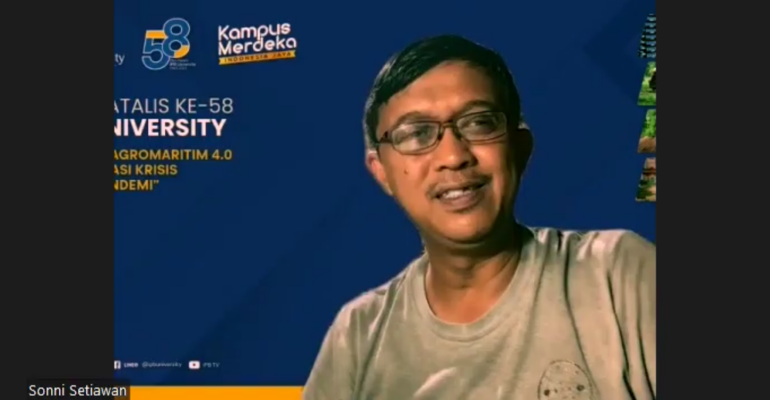IPB University Expert Responds to Natural Phenomenon in Rancaekek, Bandung

A tornado phenomenon occurred in Rancaekek, Bandung a few days ago. It was widely discussed by the people of Indonesia. IPB University lecturer from the Department of Geophysics and Meteorology, Faculty of Mathematics and Natural Sciences, Sonni Setiawan, explained that this is a natural thing to happen in Indonesia.
He explained that the atmosphere has very low pressure, where temperature convective clouds gather. The role of wind helps temperature convection and moves upward. Winds that move vertically will move in various directions and the rotation is getting faster, creating tornadoes.
“I don’t think the incident in Rancaekek is directly related to climate change, because climate is global, while the incident is local and not spread to many areas,” he said.
According to him, this incident was not a tornado but an ordinary waterspout. He explained that the patterns of tornadoes and waterspouts are similar and even the same.
“Tornadoes themselves are classified by the Fujita or EF scale. The Fujita scale starts from F1 to the highest scale, F5. The minimum EF1 scale speed is 150 kilometers per hour (km/h), while the phenomenon only has a speed of 50 km/h. If someone views the phenomenon as a tornado, it is probably because they see the wind pattern and the level of damage that occurs,” he explained.
He said the tornado status of the phenomenon in Bandung should be reconsidered. “This is actually good because it can encourage us to be able to study the phenomenon more deeply,” he said.
He continued, tornadoes are one of the destructive weather anomalies so we must be aware of it because the location of the incident is a little difficult to predict. But with the presence of cumulus clouds, it is very potential for the tornado phenomenon to occur.
“It is time for us as Indonesian meteorologists to create our own tornado scale like the one in America. So this is an opportunity for students to continue to learn and study more about this phenomenon,” he hoped. (*/Lp) (IAAS/HLF)


